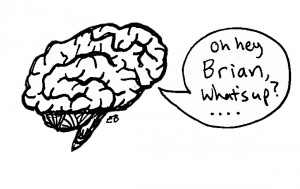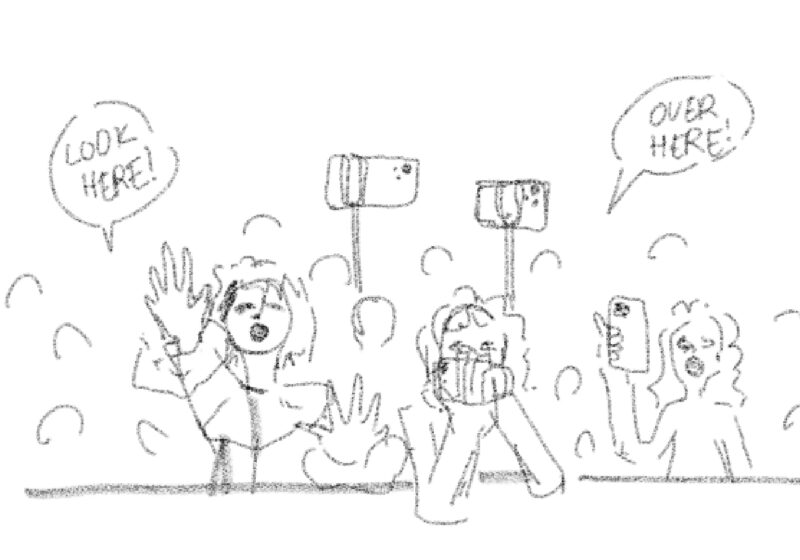 This week’s column was supposed to be on technological telepathy. A few weeks back there was a story in the news about a neural link that had been established between a study group split between India and France, where the words “hola” and “ciao” had been transmitted digitally from one subject’s brain to another. Headlines lauded the explosive success of the neuroengineering experiment, and speculated on the implications this had on the study of the human brain.
This week’s column was supposed to be on technological telepathy. A few weeks back there was a story in the news about a neural link that had been established between a study group split between India and France, where the words “hola” and “ciao” had been transmitted digitally from one subject’s brain to another. Headlines lauded the explosive success of the neuroengineering experiment, and speculated on the implications this had on the study of the human brain.
Fascinated and intrigued, I leaped at the opportunity to explore neural networking, so I sat down, drink in hand, keyboard primed, ready to write on this brave expedition into the future of computerized human interaction.
The first warning sign came when, two weeks later after the study was published, no follow-up articles could be found. Despite its flashy headlines, the story had failed to persist for even a week. Looking deeper into the articles and eventually at the published study itself, I found out why.
The experiment, while not wholly fabricated, was a pale reflection of its hype – the subject sending the words had been subjected to a simple recognition EEG of the sort that could be performed by commercial “brain reader” toys, and had triggered a cross-continent email to the “receiving” subject whose optic nerves were crudely zapped with electrodes so they would see flashes of light representing the binary version of the word in their peripheral vision.
The “word” they perceived was nothing but a flicker of morse code, established by blasting electric pulses in the general direction of their optic nerve through the skin.
I was disappointed. This was not telepathy. In fact, it was dubious as to whether it was even science. EEGs and visual stimulation via electrodes have been around for decades and have become so inexpensive in recent years that I could practically replicate the experiment in my basement.
Nor was the application novel or useful in nature – they were essentially sending an automated email using the most roundabout and unnecessarily complicated means possible. The author’s experiment had clearly been done just to rile up news outlets with the exciting one-sentence premise, but contained so little actual material that it even coaxed related scientists into calling it a “stunt.”
This is the latest case of what I’ve come to call “Headline Science,” where experiments of no actual weight or innovative substance are displayed simply for social media attention.
I’ve seen these sorts of stories crop up more and more as the internet pro-science movement gains momentum, targeting inexperienced science enthusiasts who will gladly soak up and distribute any suitably exciting article with the word “study” in the name. However, their insidiousness varies by outlet, ranging from obvious clickbait to sneakily overhyped discoveries.
The trashy ones tend to be fairly flamboyent, such as a recent video circulating about the effects of leaving a hamburger in hydraulic acid overnight to “demonstrate the digestive outcome of fast food” and admiring the blackened goop the next morning. It’s easy to group these outliers with the rest of the “one weird trick” junk at the bottom of your HuffPost article (seriously, what did you think happened to food after you ate it? Turn into sunshine and butterflies?).
But articles like the one above are nasty. While the headlines are almost always technically true, they’re misleading and evasive, disguising the cheap methods and poor practice of the studies they hide. They corrupt the credentials of science journalism as a whole, because even bad studies can pass peer review when they contain no objectionable material – there was nothing scientifically wrong with the “telepathy” experiment per-se. it simply lacked material altogether, objectionable or not.
Alternatively, the headline may take a real and useful study but distort it all out of proportion. This is especially frustrating for particle physics, where every tweaked probability equation or exploratory theorem leads to new cries of “faster than light particles” and “world destroying instability.”
This trend of empty promises and rabid enthusiasm for science-fiction concepts does nothing for the scientific community. It may not be as destructive as real scientific wrongdoing like fabrication or bias, but the misdirection and confusion it injects into the very real need for adequate scientific discussion and education in this country may be almost as bad.
I don’t like having to scan through academic papers expecting a con, but that’s the price to be paid for freedom of press, even in the normally straight-laced scientific community. In the meantime, all we can do is always keep one eye on the source, and hope we can distinguish the Einsteins from the Piltdowns.
Copeland is a member of the class of 2015.




